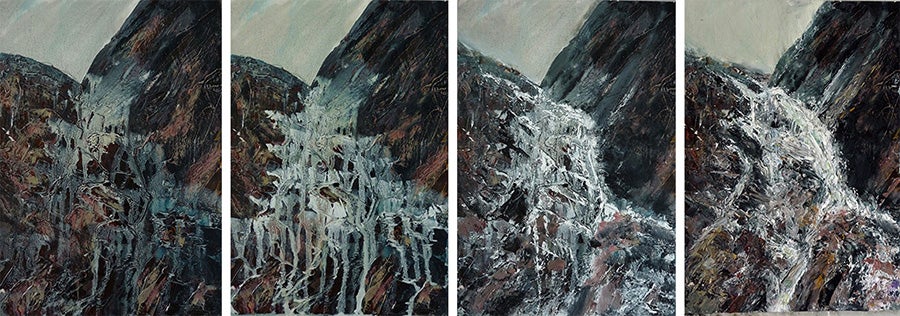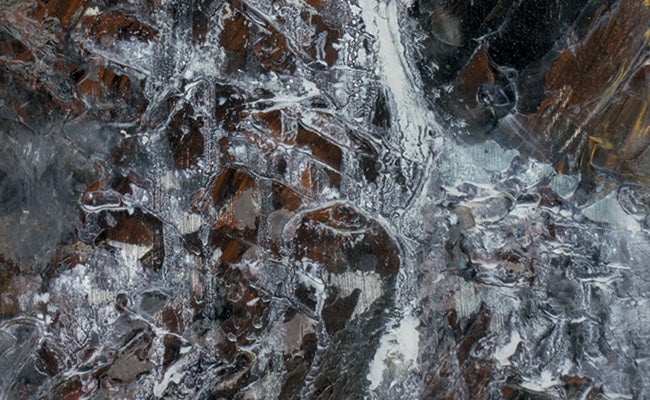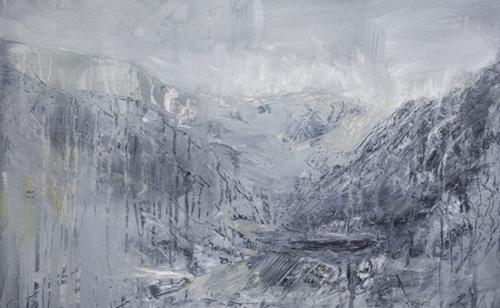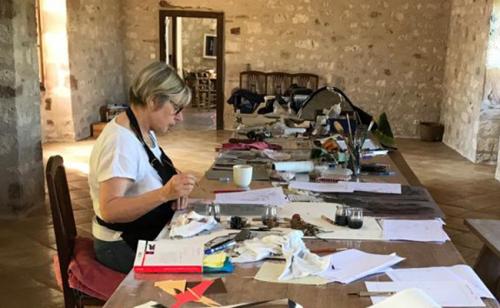This Folio Live: Dreaming a response to The Living Mountain
Scottish artist Rose Strang visited the Cairngorm Mountains seeking inspiration for her artwork to accompany The Living Mountain. Once she was home, she knew it was time to start painting, but how to capture the magic of Nan Shepherd’s incredible writing?
Read Rose's previous blog on visiting the Cairngorm Mountains to inspire her artwork here.
Dreaming a response
Before I began painting, I read and reread many passages from The Living Mountain, seeking those which best captured my imagination. There were many descriptions I’d have loved to paint, but I had to consider how the paintings would work overall, so I resolved to focus on what I paint most – an emotional and imaginative response to landscape.

We Waded on into the Brightness
My first attempt – We waded on into the brightness – was almost storybook or illustrative approach and I wasn’t sure if this was what I wanted. However, I felt a slightly more realist painting might be a good start for readers, followed by more abstracted paintings as the book progressed.
Flowing from Granite
My next painting attempt was Flowing from granite. I wanted this to echo something of the magic in Charles Folkard’s illustrations from The Princess and the Goblin by George MacDonald.

I decided to create descending ‘slabs’ in black and burnt sienna acrylic paint as a base. Acrylic dries overnight whereas thick layers of oil paint can take weeks. Once my ‘rock’ base had dried, I made a solution of solvent and titanium white then let it cascade naturally over my rock slabs. I paint a lot of water, so can depict the visual appearance of water convincingly. For this painting though, I wanted the element of liquid itself to do the work.
For Not Getting Lost is a Matter of the Mind
My next painting – For not getting lost is a matter of the mind – was more of a conceptualised idea of the fear of getting lost in a blizzard. I used gridded paper as a base, messed up to give the sense of disorder, then painted over it to suggest snow and mist. Finally, I took the image of a compass and placed it in the top-right corner, facing the wrong way. I wanted to reflect the fact that, especially in Nan’s day, handling a paper map in a freezing hurricane is no easy matter and is definitely ‘a matter of the mind’, since fear is very real in such circumstances.
But Did I Dream that Roe
When painting But did I dream that roe?, I used rough wood and allowed the grainy texture to show through. It suggests the idea of being inside the wood of a forest.
I used oils on wood for this painting, with a swathe of solvent-diluted Mars black. Given a day or so to dry, you can scratch through to the surface which gives a sharp calligraphic edge, similar to line-making in the etching process. The swathe of black oil paint created three peaks, and with the end of a plastic container dipped in white oil paint, I created a simple moon. After dripping droplets of purply lilac onto the black, I suggested the smoke of a smouldering fire, then etched in the outline of a roe deer. I hoped it would evoke the feeling of the Highlands on a moonlit night. Scotland’s culture is rich with otherworldly stories and myths. The symbology of deer, more often stags, has a central place or role in our mythical past, going far back into pre-history.
Everything became good to me
The toughest painting of this commission was the final one. I was moved to tears by the final passages of The Living Mountain. Nan describes the way landscape has been changed by her changing experience; with growing wisdom, she writes; ‘everything became good to me’.
I chose that as the title of my last work, though I felt I’d need another year to experiment with ways to depict that experience. In the end, I took a painting I’d started, which I felt ‘said’ something about the unknown or ungraspable aspects of the mountain and added small details which added to a sense of scale.
The Living Mountain
Working on these paintings has been wonderful, and I’m grateful to Sheri Gee and all at the Folio Society for choosing my work and presenting it perfectly, to Erlend Clouston for his friendly support and everything I learned about Nan, and to Robert MacFarlane for his insightful words about the paintings; all of these people sincere in their dedication to the legacy and inspiration of Nan Shepherd. It’s an honour to be part of that.
Read the rest of Rose's blog here.











